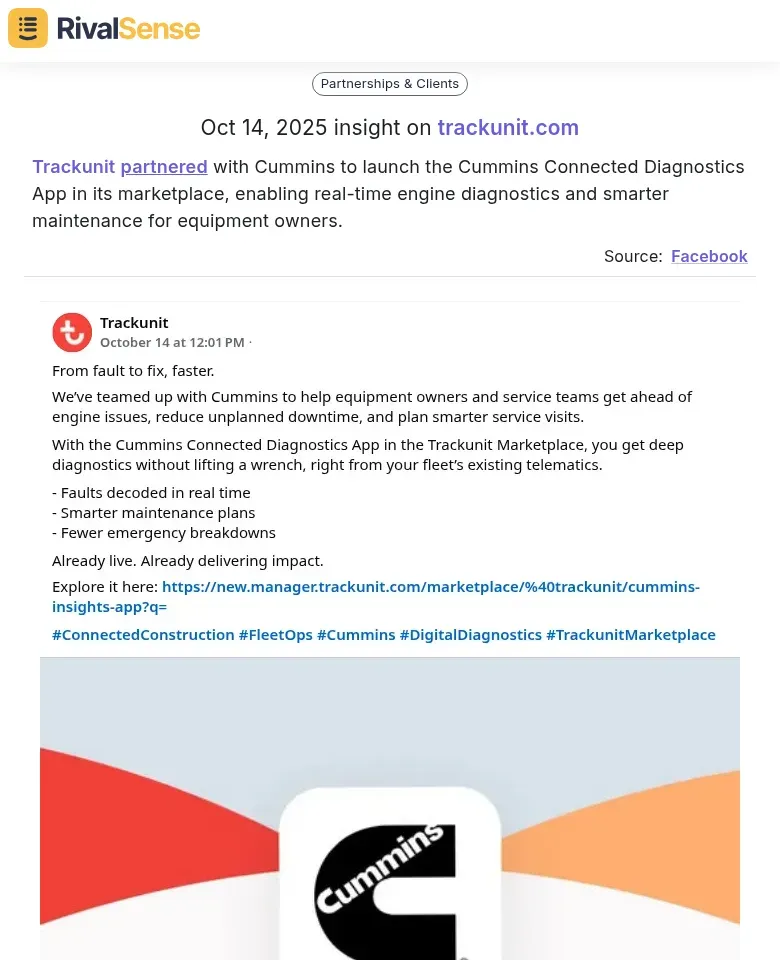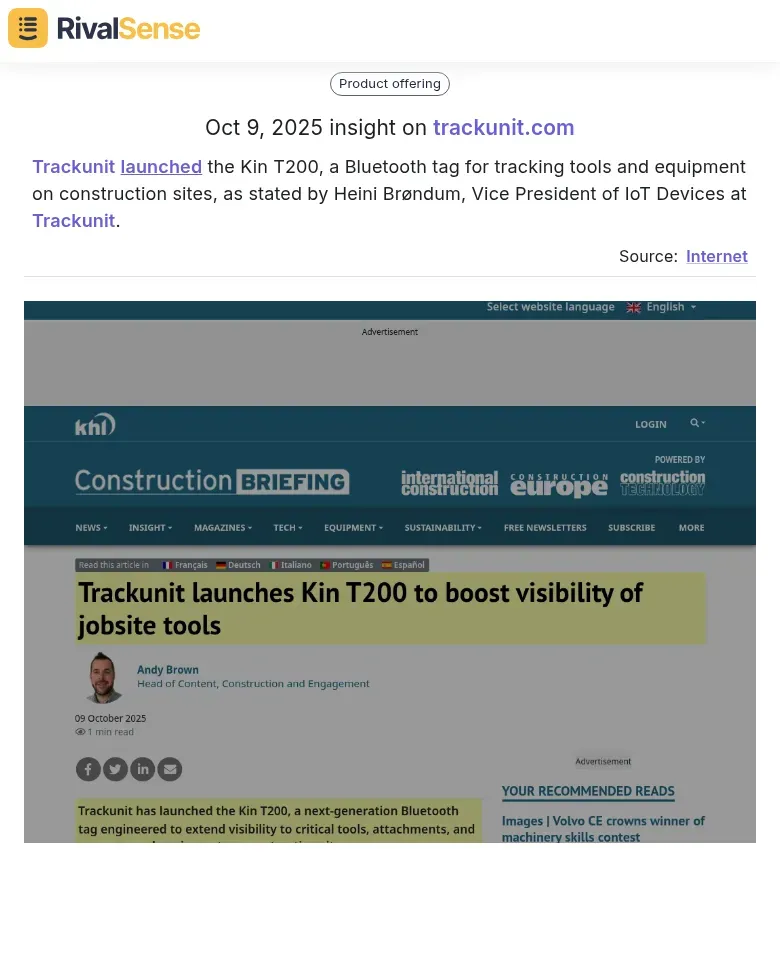Construction Key Account Management Best Practices for IoT SaaS
Key Account Management (KAM) in IoT SaaS for construction is all about strategically nurturing high-value client relationships to foster mutual growth and success. In this dynamic sector, long-term partnerships are essential because construction projects increasingly depend on IoT solutions for real-time monitoring, predictive maintenance, and safety compliance. Unique challenges include integrating with legacy systems, ensuring robust data security on rugged sites, and navigating complex stakeholder networks. However, opportunities abound in upselling advanced analytics, expanding into new project phases, and leveraging IoT data to improve client ROI. Strategic partnerships are vital—collaborate with hardware providers, software integrators, and industry associations to create a resilient ecosystem. 🛠️
Practical steps to get started:
- Identify key accounts based on project scale and innovation appetite
- Develop customized IoT dashboards for real-time insights
- Schedule quarterly reviews to align on goals and address issues proactively
💡 Tip: Use competitor tracking tools to monitor rival offerings and adapt your strategies, ensuring your IoT SaaS stays ahead in a competitive market.
Strategic Partnership Development and Ecosystem Expansion
Strategic partnerships are a cornerstone for IoT SaaS success in the construction industry, enabling you to extend your capabilities and reach without heavy R&D investments. By collaborating with complementary players, you can co-create solutions that address real-world challenges and enhance your product's value proposition. For instance, partnering with hardware manufacturers or BIM software providers can lead to integrated offerings that streamline asset tracking and project management.
A great example is Trackunit partnering with Cummins to launch the Cummins Connected Diagnostics App in its marketplace, which enables real-time engine diagnostics and smarter maintenance for equipment owners.  Monitoring such partnerships is valuable for business strategy as it helps identify collaboration opportunities, assess ecosystem trends, and stay ahead in building robust alliances that drive customer retention and growth.
Monitoring such partnerships is valuable for business strategy as it helps identify collaboration opportunities, assess ecosystem trends, and stay ahead in building robust alliances that drive customer retention and growth.
Actionable steps to build partnerships:
- Identify industry leaders in hardware, software, or project management
- Co-develop integrations, such as linking IoT sensors to BIM for real-time tracking
- Launch co-branded solutions and joint marketing campaigns
- Build a marketplace ecosystem with APIs and SDKs for third-party apps
📊 Tip: Use a partnership scorecard to track metrics like joint revenue and customer satisfaction, ensuring alliances deliver mutual benefits.
Product Innovation and Hardware Integration
Integrating IoT hardware with your SaaS platform is a game-changer for construction key account management, as it directly tackles on-site challenges like equipment theft and maintenance delays. By deploying sensors and complementary devices, you can offer real-time tracking, predictive maintenance, and enhanced safety features that add tangible value for high-value clients.
Consider Trackunit launching the Kin T200, a Bluetooth tag for tracking tools and equipment on construction sites, as highlighted by Heini Brøndum, Vice President of IoT Devices.  Tracking competitor product launches is crucial for business strategy because it allows you to stay informed about innovations, adapt your offerings, and identify gaps in the market to maintain a competitive edge.
Tracking competitor product launches is crucial for business strategy because it allows you to stay informed about innovations, adapt your offerings, and identify gaps in the market to maintain a competitive edge.
Practical applications include:
- Equipment tracking: Use RFID tags and GPS to monitor asset location and usage
- Maintenance optimization: Install vibration sensors to predict failures
- Environmental monitoring: Deploy sensors for air quality and temperature compliance
✅ Implementation checklist:
- Conduct site audits to identify hardware needs
- Select durable, weather-resistant IoT devices
- Ensure seamless API integration between hardware and software
- Train account managers on hardware troubleshooting
- Monitor hardware performance metrics alongside software KPIs
💡 Tip: Start with pilot programs at key accounts to validate hardware effectiveness before full deployment.
Global Expansion and Localized Account Management
Expanding globally in the IoT SaaS construction space requires a nuanced approach to key account management, with localized teams that understand regional practices, regulations, and business cultures. This ensures your solutions are relevant and effective, whether navigating Europe's sustainability standards or building relationships in Asia's network-driven markets.
For example, Trackunit is hiring a Key Account Director in Japan, as announced by Martin Th Appel and Chi Sen.  Keeping an eye on competitor hiring moves is valuable for business strategy as it reveals expansion plans, talent acquisition trends, and potential market shifts, helping you anticipate competitive threats and align your own growth initiatives.
Keeping an eye on competitor hiring moves is valuable for business strategy as it reveals expansion plans, talent acquisition trends, and potential market shifts, helping you anticipate competitive threats and align your own growth initiatives.
Practical steps for global expansion:
- Conduct thorough market research to identify key accounts and opportunities
- Hire and train local experts familiar with regional compliance and customs
- Use localized communication tools and languages to build trust
- Attend international conferences and arrange C-level meetings
🌍 Tip: Leverage case studies from similar regions to build credibility and offer tailored support for multi-site deployments.
Data-Driven Account Management and Proactive Engagement
In IoT SaaS for construction, data-driven account management shifts the focus from reactive support to proactive partnerships, leveraging analytics to anticipate client needs and drive value. By analyzing equipment utilization, maintenance cycles, and operational patterns, you can offer insights that prevent issues and optimize performance, strengthening client relationships.
Start by integrating IoT dashboards with real-time KPIs to monitor key metrics like equipment uptime and energy consumption. For instance, if data shows a crane's usage peaks on specific days, suggest optimized scheduling or predictive maintenance to avoid downtime. Set up automated alerts for abnormal behavior, such as temperature spikes in mixers, and provide actionable recommendations like "Replace hydraulic filters in 30 days based on current usage."
Practical steps to implement data-driven strategies:
- Integrate IoT dashboards with real-time KPIs for continuous monitoring
- Schedule quarterly reviews using data trends to propose upgrades and services
- Create checklists for common issues, e.g., "5 signs of equipment wear from sensor data"
📈 Tip: Use historical data to forecast part replacements and reduce downtime, while identifying upsell opportunities like tailored service plans for high-usage clients.
Building Long-Term Customer Value and Retention
Building long-term customer value and retention in construction IoT SaaS hinges on strategic key account management that aligns with client workflows and evolving needs. By developing comprehensive success programs and fostering continuous improvement, you can deepen relationships, reduce churn, and drive sustained growth in a competitive landscape.
Assign dedicated success managers who understand construction timelines, compliance requirements, and IoT integration challenges. Provide onboarding checklists that cover sensor deployment, data dashboard setup, and safety protocol alignment to ensure a smooth start. Implement tiered service levels—such as bronze for basic support and gold for proactive monitoring and custom analytics—to match resources with client impact and boost loyalty.
Actionable strategies for retention:
- Develop customer success programs tailored to construction workflows
- Use tiered service levels based on account size and strategic importance
- Conduct quarterly surveys and analyze IoT data trends for feedback and upsells
🔄 Tip: Set up a feedback loop where client suggestions influence product roadmaps, demonstrating your commitment to their success and fostering long-term partnerships.
Ready to elevate your key account management? Try RivalSense for free today and get your first competitor report to tackle the challenges outlined in this post—stay informed on product launches, partnerships, and more to keep your IoT SaaS ahead of the curve!
📚 Read more
👉 Mastering Competitor Tracking: Financials, Fundraising, and M&A for B2B Leaders
👉 Unlocking Competitor Insights: The Power of Tracking Management Changes
👉 Key Account Performance Dashboard: The Ultimate Guide for Strategic Account Management
👉 Advanced Tactics to Analyze Competitor Marketing Strategy on Influencer Platforms
👉 How Reddit's Legal Action Against Perplexity AI Revealed Competitor Vulnerabilities
